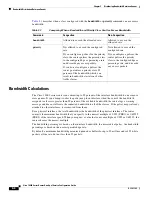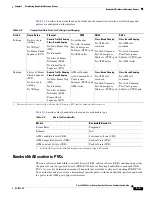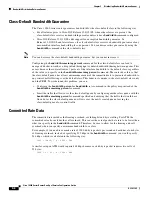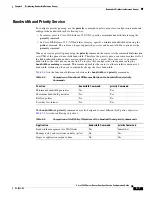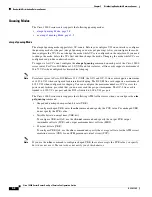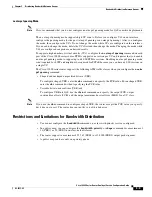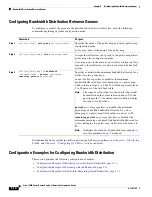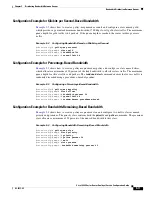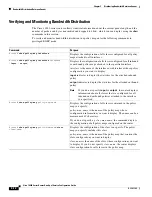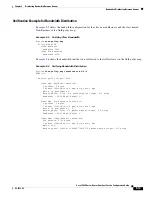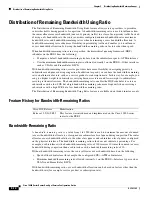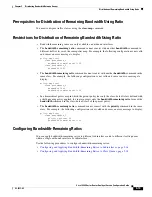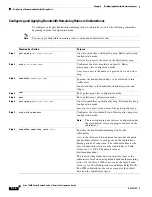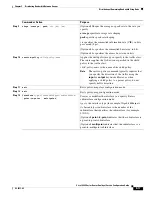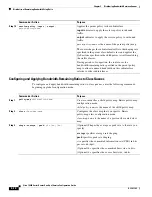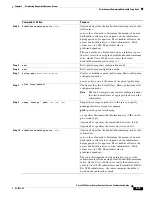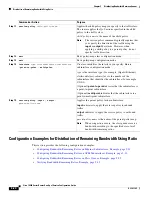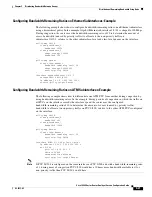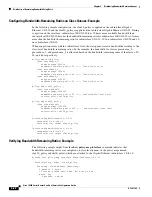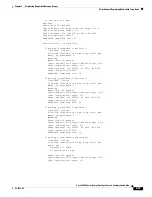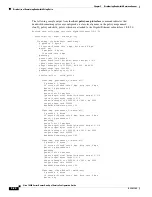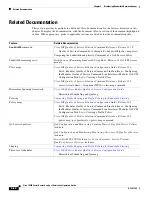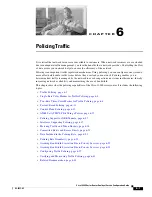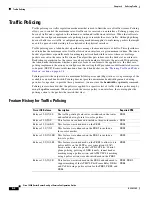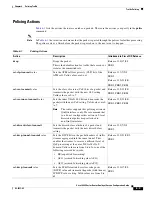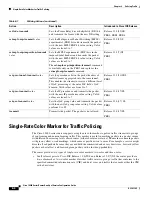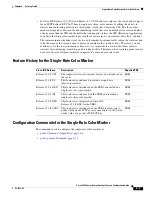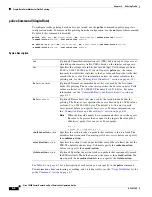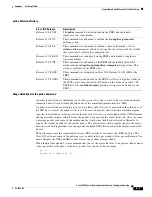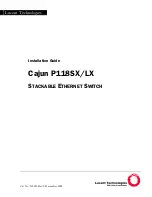
5-18
Cisco 10000 Series Router Quality of Service Configuration Guide
OL-7433-09
Chapter 5 Distributing Bandwidth Between Queues
Distribution of Remaining Bandwidth Using Ratio
Configuring and Applying Bandwidth-Remaining Ratios to Class Queues
To configure and apply bandwidth-remaining ratios to class queues, enter the following commands
beginning in global configuration mode:
Step 14
service-policy
{
input
|
output
}
parent-policy-name
Applies the parent policy to the subinterface.
input
indicates to apply the service policy to inbound
traffic.
output
indicates to apply the service policy to outbound
traffic.
parent-policy-name
is the name of the parent policy map.
The router shapes the subinterface traffic to the shaping rate
specified in the parent class-default class and applies the
QoS actions specified in the child policy to traffic matching
the traffic classes.
During periods of congestion, the router uses the
bandwidth-remaining ratio specified in the parent policy
map to allocate unused bandwidth on this subinterface
relative to other subinterfaces.
Command or Action
Purpose
Command or Action
Purpose
Step 1
policy-map
child-policy-name
Creates or modifies a child policy map. Enters policy-map
configuration mode.
child-policy-name
is the name of the child policy map.
Step 2
class
class-map-name
Configures the class map that you specify. Enters
policy-map class configuration mode.
class-map-name
is the name of a previously created class
map.
Step 3
shape
{
average
|
peak
}
cir
[
bc
]
[
be
]
(Optional) Shapes the average or peak rate to the rate you
specify.
average
specifies average rate shaping.
peak
specifies peak rate shaping.
cir
specifies the committed information rate (CIR), in bits
per second (bps).
(Optional)
bc
specifies the committed burst size, in bits.
(Optional)
be
specifies the excess burst size, in bits.

